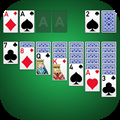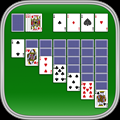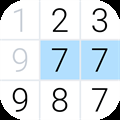
Quick Links
- What Is An Action?
- What Actions Can You Take?
- How To Use Actions
As a player in Dungeons & Dragons, there's pretty much nothing you can't do. So much of the fun of the game is simply explaining to your Dungeon Master the course of action you'd like to take, and resolving it through dice rolls. However, it's also important to know that the 2024 Player's Handbook does offer specific actions you can take that are universal.
RelatedDungeons & Dragons: How Treasure Works In The 2025 Monster Manual
Every great monster hoards a pile of treasure. Here's how to use treasure based on the 2025 Monster Manual.
PostsUnderstanding these rules, and how specific actions work, can open up a wide range of possibilities for your character in Dungeons & Dragons. So, here's a full breakdown of everything you need to know about actions.
What Is An Action?
Sample Play by John GrelloIn Dungeons & Dragons, an action is something you do as a player character other than simply moving or speaking. Typically, an action takes six seconds of in-game time.
In combat, this is why you'll sometimes hear DMs say that a round is six seconds long, because everyone is taking one action typically during combat.
Actions can be either combative, utilitarian, or supportive, depending on what you're trying to achieve. This means you can do things like healing your party, attacking an enemy, or investigating an area of interest.
Many spells, magic items, species abilities, and class features may say 'use the X action' in their rules description.
When clearing up rules disparities at the table, refer to the Rules Glossary at the back of the 2024 Player's Handbook if there is any confusion about what this action entails.
Remember that actions are also distinct from bonus actions or reactions, which occupy their own lane in terms of action economy.
What Actions Can You Take?
An Adventuring Party by Viko MenezesWhile you can, of course, do a lot of things with your action, the 2024 Player's Handbook offers many specific actions you can take.
You are by no means limited to these actions, but, you'd be surprised how many times things you might want to do fall under these umbrellas.
Here is a quick overview of all actions, and a brief description of how they work.
Action
Details
Attack
Attack an enemy or object of your choosing with either a weapon or Unarmed Strike.
Dash
Double your movement speed.
Disengage
You can move away from an enemy that's in melee range of you without provoking an opportunity attack.
Dodge
When you take this action, attack rolls against you have disadvantage. Plus, you can make Dexterity saving throws with advantage. However, if you are Incapacitated, you no longer have this benefit.
Help
Assist another player with the attack or ability check, granting them advantage.
Hide
Make a Stealth check to hide yourself from view.
Influence
Make either a Charisma or Wisdom check (at the DM's discretion) to persuade another creature.
Magic
Use magic either via a spell, magic item, or magical effect.
Ready
Prepare an action that you can trigger under a specified set of circumstances.
Search
Investigate an area of interest with a Wisdom check (at the DM's discretion).
Study
Try to ascertain meaning or learn something with an Intelligence check (at the DM's discretion).
Utilize
Make use of any nonmagical item or object.
read moreMany actions, as well as most improvised or unconventional actions you may choose to take, will require a d20 roll determined by the DM.
The Rules Glossary of the 2024 Player's Handbook also has additional rules for some of these actions, which can be referenced when turns and player actions get complicated.
How To Use Actions
A Hag's Bargain by Linda LithenA great way to understand how to use actions properly is to break each action down into categories. All-in-all, there are three 'categories' of actions in Dungeons & Dragons.
Some actions belong to multiple categories, and can be used differently in different situations.
Action Category
Details
Example Actions
Combat
These actions revolve primarily around combat, and will be used when you're in initiative.
These actions can involve attacking another creature, defending yourself, or assisting in another player's combat endeavor.
- Attack
- Dash
- Disengage
- Dodge
- Help
- Hide
- Magic
- Ready
Utility
Utility actions can be used during combat scenarios, but more often than not, these actions will be used outside of initiative.
These actions can pertain to investigating areas of interest, casting spells, or altering a situation via roleplay.
- Help
- Influence
- Magic
- Search
- Study
- Utilize
- Hide
Support
Support actions help out the party, and can be used on the field of battle, or during any kind of check.
Healing or assisting your allies in some way typically defines the support action.
- Help
- Influence
- Ready
- Utilize
Whatever situation you find yourself in, remember it's not all about attacking or defending. Helping another ally or investigating an area can open up possibilities that you might not have previously thought of in the heat of the moment.
Remember, you can only take one action at a time.
Part of the reason actions are so important to understand is that ordering actions will be how the DM maintains narrative continuity, particularly for larger parties.
NextDungeons & Dragons: Wild Shape, Explained
Here's everything you need to know about Druid's Wild Shape and Circle Of The Moon Druids in D&D, including the 2024 changes.
Posts












